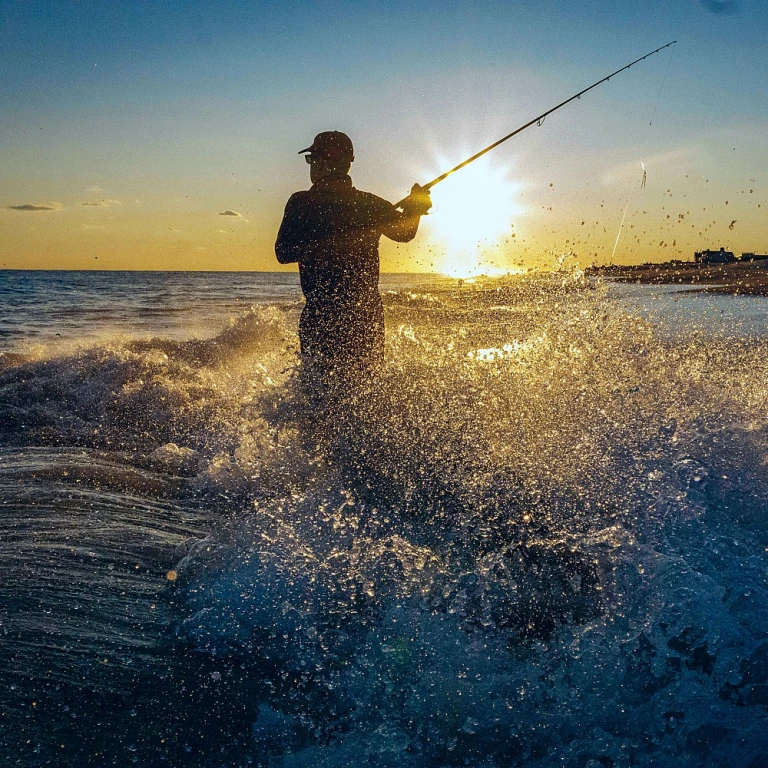Understanding the Role of Dock Cleats in Fishing
The Importance of Dock Cleats in Your Fishing Routine
Dock cleats might seem like a small aspect of your fishing setup, but they play a crucial role in ensuring that your time by the water remains smooth and hassle-free. Whether you're new to recreational fishing or a seasoned angler, understanding why dock cleats are essential is pivotal.
Dock cleats provide a reliable way to secure boats to docks, preventing any unwanted movement caused by waves or wind. This stability is essential when you're loading or unloading gear. Imagine having a separate session
exploring the best options for surf spinning rods and not having to worry about your boat shifting unexpectedly.
For those looking to fortify their boat docks, cleats come in various materials and designs. Options range from aluminum to stainless steel, each offering different levels of durability and resistance to marine conditions. A cast aluminum dock cleat or cleat aluminum offers lightweight yet robust protection, while a cleat stainless steel option ensures heavy duty stability, particularly in corrosive saltwater environments. The choice of material significantly impacts the longevity of the product and its performance.
When investing in dock cleats, the price can vary based on the material and design. Marine-grade cleats offer enhanced resistance against harsh weather, while galvanized steel options may have a more attractive sale price but require additional maintenance. Always consider the marine circumstances in which you'll be using them, such as the weight of your vessel and the typical weather conditions.
Dock cleats also come with different bolting options, from base-mounted to bolt dock designs. A cleat open base could be ideal for easy tying off, while a heavy duty bolted dock cleat might be best for those with larger vessels. For seamless installation, some cleats come with pre-drilled holes and include stock hardware.
In the end, selecting the right dock cleat is about balancing your needs with available options, ensuring that your fishing experience is both safe and enjoyable.
Choosing the Right Dock Cleats for Your Needs
Factors to Consider for the Perfect Dock Cleat Selection
Selecting the right dock cleat involves more than just a quick glance at your local marine supply store. Consider these factors to ensure your cleats dock fits your needs perfectly.
- Material Options: Dock cleats come in various materials including galvanized steel, marine-grade stainless steel, and cast aluminum. Stainless steel cleats offer excellent durability and corrosion resistance, perfect for marine environments. Aluminum options are lighter and often available at a sale price, while galvanized options provide a cost-effective solution with decent durability.
- Size and Compatibility: The ideal cleat size depends on the size of your boat and dock. Ensure that the cleat aluminum or steel cleat fits both heavy and light duty requirements. Consider the bolt size as it impacts the cleat's capacity to securely hold your vessel.
- Base Styles: Dock cleats can feature an open base or a closed base design. Open base cleats, also known as cleat open, allow for quick and easy rope adjustments, making them popular among frequent users at boat docks.
- Weight Capacity: Assess the weight capacity of the cleat, especially if you own a heavy duty boat or have multiple boat cleats on one dock. Choose models that ensure your boat remains securely moored regardless of its size. You might want to consider adding a few more to your cart to enhance performance.
- Price and Availability: Consider the price range and stock options to make a practical and economic decision. Dealers often provide discounts when buying in bulk or offer special discounts on product lines out-of-season.
To explore further how these factors tie into a seamless fishing experience, consider discovering
the perfect outdoor fish fryer for your catch. As you make the right choice of boat dock cleats, ensure you equip yourself with complementary fishing accessories that enhance your overall experience.
Installation Tips for Dock Cleats
Proper Installation Techniques for Dock Cleats
Installing dock cleats correctly is crucial for ensuring their effectiveness and longevity. Here are some expert tips to help you secure them safely and maintain stability:
-
Select Quality Materials: Start by choosing marine-grade materials like galvanized steel or stainless steel, known for their durability and resistance against harsh marine environments. For a lightweight yet sturdy option, consider cleats made from cast aluminum.
-
Determine the Correct Placement: Place your dock cleat at an appropriate distance based on the boat size you'll be docking. This ensures optimal functionality; an open base design is often favored for its versatility.
-
Use the Right Fasteners: Opt for stainless steel bolts to match your cleat. Ensuring a good fit is key to maximizing the cleat's heavy-duty performance and prolonging wear no matter the tough conditions.
-
Secure the Cleat Firmly: As you install the cleat on your boat docks, ensure a secure attachment to the dock's base using marine-grade bolts. Tighten each bolt evenly to distribute pressure and prevent unwanted shifts under load.
-
Test the Installation: Once installed, give your cleat a thorough test by putting it under significant tension. Evaluate its stability, and adjust if necessary for optimal support during mooring activities.
By following these installation guidelines, your dock cleat will be an essential asset, offering reliability every time you dock or moor your boat. For more tips on maintaining your fishing gear and equipment, consider exploring options for reliable sandy terrains with our informative
guide.
Maintaining Your Dock Cleats for Longevity
Keeping Dock Cleats in Prime Condition
Maintaining your dock cleats is vital for ensuring their longevity and effectiveness. With regular exposure to harsh marine environments, it's crucial to implement a consistent care routine. Here are some key points to consider:
- Inspect Regularly: Regular checks for rust, corrosion, or any physical damage are essential. Cleats made from galvanized steel, marine-grade stainless steel, or cast aluminum offer high durability. However, even the best materials require attention to ensure they remain free from wear and tear.
- Clean Thoroughly: Saltwater can be particularly harsh on dock cleats. It is advisable to rinse them with fresh water after every use, focusing on the cleat and the area where the bolt secures it to the dock. This helps prevent salt buildup that can accelerate corrosion.
- Tighten Bolts: Ensure that the bolts securing your dock cleats remain tight. The consistent movement of the docks and boats can loosen them over time. Regularly check and tighten the bolts to maintain a secure attachment.
- Choose Marine-Grade Products: Investing initially in high-quality cleats, such as those made from stainless steel or heavy-duty cast aluminum, can save you maintenance time and replacement costs. Their robust nature is well-suited to handle the pressures and environmental challenges of boating activities.
- Consider Product Options: If your current cleats are beginning to show signs of significant wear despite maintenance efforts, evaluate options for replacement. Products come in various styles like open base, cleat stainless, or cleat aluminum, each suited to different needs and price points. Choosing a reliable product will enhance functionality and contribute to your dock's longevity.
By taking proactive steps in maintaining your boat dock cleats, you ensure safety and functionality while maximizing the value of your investments in marine equipment.
Innovative Dock Cleat Designs for Modern Fishermen
Modern Innovations in Dock Cleat Design
The world of recreational fishing has seen significant technological advancements in recent years, and dock cleats are no exception. With so many options available, it's crucial to keep up with the latest innovative designs to enhance your marine experience.
One trend that's gaining popularity is the use of marine grade stainless steel and cast aluminum materials. These options not only offer durability but also provide resistance to corrosion, an important feature for cleats exposed to saltwater environments. Choosing a stainless steel or cleat aluminum product can significantly extend the lifespan of your dock accessories.
For those looking for heavy duty solutions, consider investing in galvanized steel or open base cleat designs. These products are known for their robustness, making them ideal for securing heavier boats. Galvanized steel provides excellent protection against rust, which is beneficial if you're frequently mooring on docks exposed to harsh weather conditions.
Another innovative feature is the bolt system used for installation. Cleats with a bolt dock mechanism ensure a secure fix, reducing the risk of displacement or loosening over time. Look for models that offer easy installation with minimal tools required, ideally with bolt options that fit standard sizes. This not only saves time but also simplifies the installation process, making it accessible even for beginners.
Price is always an important consideration when purchasing dock cleats. While it might be tempting to go for the lowest sale price, it's crucial to weigh the cost against the long-term benefits. Products with superior construction materials like stainless steel or heavy cast aluminum might come at a premium, but their longevity and performance justify the investment.
Finally, don't forget to check the stock availability of your preferred cleat dock product. Some cleats, especially those with unique designs or materials, may require pre-ordering. Keeping an eye on add cart options ensures you won't miss out when stock is limited.
In conclusion, keeping abreast of innovative dock cleat designs will ensure that your fishing excursions are safe and efficient. With the right choice, installation techniques, and routine maintenance, you'll be well-placed to enjoy years of rewarding fishing experiences on your boat docks.
Common Mistakes to Avoid with Dock Cleats
Avoiding Pitfalls with Your Dock Cleats
For recreational fishermen, maximizing the efficiency and safety of your boat dock is essential. Dock cleats play a significant role in this endeavor, but several common mistakes can disrupt their function and longevity. By addressing these, you can ensure a seamless and enjoyable fishing experience.
- Incorrect Size Selection: One of the most frequent blunders is choosing the wrong size or material for your cleats. Consider the type of vessel you have and opt for marine-grade stainless steel or galvanized steel, which provides durability and resistance to harsh weather conditions.
- Improper Installation: As discussed earlier, a secure installation is paramount. Using the wrong bolt or failing to ensure a solid base can lead to instability. Ensure you have the right tools and follow installation tips to prevent the cleat from loosening over time. A heavy duty bolt dock can often accommodate more stress.
- Overlooking Material Quality: While the initial price might tempt you to invest in lower-quality cleats, opting for long-lasting materials like stainless steel or cast aluminum is critical. Cleat aluminum and cleat stainless options ensure prolonged usage and minimal maintenance costs.
- Neglecting Maintenance: Regular upkeep is key to preserving your dock cleat's effectiveness. Simple actions such as inspecting the bolts and checking for rust can extend the life of your boat dock components.
- Ignoring Innovative Designs: With modern advancements, open base designs and other innovative options are now available. These could offer improved functionality for your specific needs, so explore various cleat open options on the market.
Avoiding these pitfalls involves a balanced approach to choosing and maintaining your dock cleats. Understanding these nuances will enhance your fishing experience while ensuring safety and efficiency at your docks.

